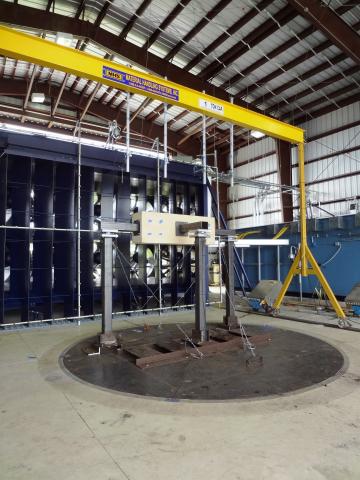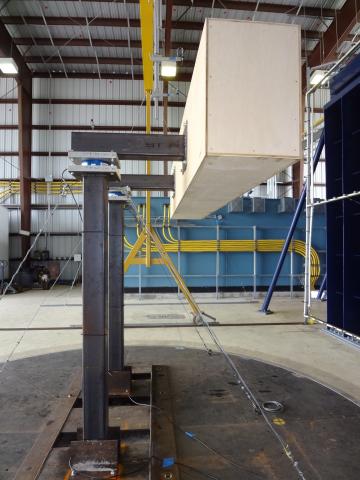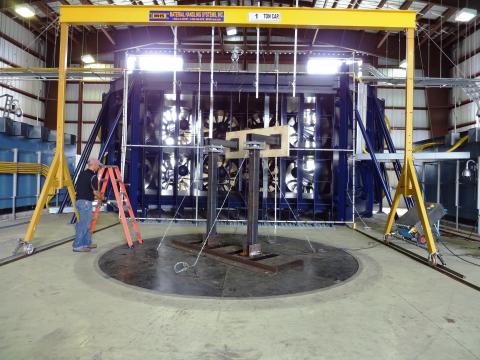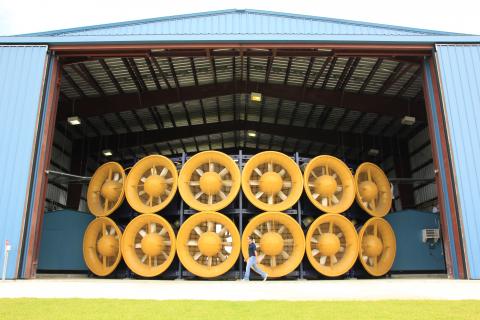Full-Scale Wall of Wind Testing of Variable Message Signs (VMS) Structures to Develop Drag Coefficients for AASHTO Supports Specifications
The overall scientific objective of this project is to develop accurate drag coefficients for incorporation in the AASHTO Support Specification to foster safer and more economic design of VMS structures. This project will facilitate the development of new drag coefficients for fatigue design under service load conditions and ultimate strength design under extreme wind conditions.
Final Report
Presentations:
- "Development of New VMS Drag Coefficients", presented at the 2014 UTC Conference for the Southeastern Region, Atlanta, Georgia, March 24-25, 2015.
- "Mitigating Fatigue of Cantilevered Overhead Sign Structures Due to Natural Wind and Truck-Induced Gusts", presented at the 2014 UTC Conference for the Southeastern Region, Atlanta, Georgia, March 24-25, 2015.
Project Information Forms:
• Wall of Wind (WOW) tests on VMS and data analyses were completed. Conference calls are conducted between FIU and UABteam members to finalize results. PhD student Debbie Meyer is completing her dissertation based on WOW results and plans to graduate in Fall 2014.
• UAB has performed the FEM analysis. Based on the FIU Wall of Wind test results and Finite Element Modeling at UAB, new drag coefficients are being developed. Those coefficients will be recommended for incorporation into AASHTO specs. Instead of a single drag coefficient, inappropriately applied to all VMS structures under the current design provision, a new table will be proposed containing a set of wind drag coefficients as functions of the various geometrical configurations of the VMS structures. This will help realize economic benefits by downsizing structural elements without jeopardizing the safety of these cornerstones of Intelligent Transportation Systems (ITS) infrastructure.
• Significant reduction in drag by simple corner modifications (as much as 30% reduction in loading) has been achieved. Such information will be disseminated to VMS manufactures through DOT and Florida Turnpike personnel. These design optimizations can be very easily and economically incorporated in to future aerodynamically favorable VMS structures to reduce their cost.
Significant reduction in drag by simple corner modifications (as much as 30% reduction in loading) has been achieved. Such information will be disseminated to VMS manufactures through DOT and Florida Turnpike personnel. These design optimizations can be very easily and economically incorporated in to future aerodynamically favorable VMS structures to reduce their cost.
Theme by Danetsoft and Danang Probo Sayekti inspired by Maksimer










